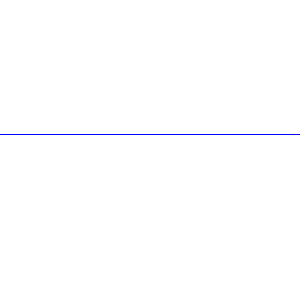I have a 2d pygame water simulation thingy that I followed a tutorial to make. I also found the answer to this question to fix issues with the tutorial: Pygame water physics not working as intended
I have since been trying to convert this program over to using pyopengl to render things. However, I have been struggling to: A: Draw the water polygon B: texture the water polygon with a tiled texture
Here is my (rather poor) attempt at converting this code to pyopengl.
import pygame, random
import math as m
from pygame import *
from OpenGL import *
from OpenGL.GLU import *
from OpenGL.GL import *
pygame.init()
WINDOW_SIZE = (854, 480)
screen = pygame.display.set_mode(WINDOW_SIZE,0,32,DOUBLEBUF|OPENGL) # initiate the window
clock = pygame.time.Clock()
def draw_polygon(polygon_points):
glBegin(GL_POLYGON);
for i in polygon_points:
glVertex3fv(i)
#glEnd()
class surface_water_particle():
def __init__(self, x,y):
self.x_pos = x
self.y_pos = y
self.target_y = y
self.velocity = 0
self.k = 0.04
self.d = 0.08
self.time = 1
def update(self):
x = self.y_pos - self.target_y
a = -(self.k * x + self.d * self.velocity)
if self.y_pos > self.target_y:
self.y_pos -= 0.1
if self.y_pos < self.target_y:
self.y_pos += 0.1
self.velocity = round(self.velocity)
self.y_pos += self.velocity
self.velocity += a
self.time += 1
class water_tile():
def __init__(self, x_start, x_end, y_start, y_end, segment_length):
self.springs = []
self.x_start = x_start
self.y_start = y_start
self.x_end = x_end
self.y_end = y_end - 10
for i in range(abs(x_end - x_start) // segment_length):
self.springs.append(surface_water_particle(i * segment_length + x_start, y_end))
def update(self, spread):
passes = 4 # more passes = more splash spreading
for i in range(len(self.springs)):
self.springs[i].update()
leftDeltas = [0] * len(self.springs)
rightDeltas = [0] * len(self.springs)
for p in range(passes):
for i in range(0, len(self.springs)):
if i > 0:
leftDeltas[i] = spread * (self.springs[i].y_pos - self.springs[i - 1].y_pos)
self.springs[i - 1].velocity += leftDeltas[i]
if i < len(self.springs):
rightDeltas[i] = spread * (self.springs[i].y_pos - self.springs[(i + 1)%len(self.springs)].y_pos)
self.springs[(i + 1)%len(self.springs)].velocity += rightDeltas[i]
for i in range(0, len(self.springs)):
if round (leftDeltas[i],12) == 0 or round (rightDeltas[i],12) == 0:
self.springs[i - 1].y_pos = self.y_end+10
if i > 0:
self.springs[i - 1].y_pos += leftDeltas[i] # you were updating velocity here!
if i < len(self.springs):
self.springs[(i + 1)%len(self.springs)].y_pos += rightDeltas[i]
def splash(self, index, speed):
if index >= 0 and index < len(self.springs):
self.springs[index].velocity = speed
def draw(self):
water_surface = pygame.Surface((abs(self.x_end-self.x_start), abs(self.y_start - self.y_end)), depth=8).convert_alpha()
polygon_points = []
polygon_points.append((self.x_start, self.y_start,0))
for spring in range(len(self.springs)):
polygon_points.append((self.springs[spring].x_pos, self.springs[spring].y_pos,0))
polygon_points.append((self.springs[len(self.springs) - 1].x_pos, self.y_start,0))
draw_polygon(polygon_points)
return water_surface
class water_object:
def __init__(self, x_start, x_end, y_start, y_end, segment_length, x_pos, y_pos):
self.water = water_tile(x_start,x_end,y_start,y_end,segment_length)
self.image = self.water.draw()
self.rect = self.image.get_rect()
self.rect.x = x_pos
self.rect.y = y_pos
def update(self):
self.water.update(0.1)
self.image = self.water.draw()
water_list = [water_object(0,276+16,64,0,16,0,20)]
while True:
screen.fill((0,0,0))
for water in water_list:
gluPerspective(45, (WINDOW_SIZE[0]/WINDOW_SIZE[1]), 0.1, 50.0)
glClear(GL_COLOR_BUFFER_BIT|GL_DEPTH_BUFFER_BIT)
water.update()
#screen.blit(water.image, (water.rect.x,water.rect.y))
#water_test.x_start = water_test.x_start + 1
#if random.randint(0,8) == 1:
#water_test.splash(random.randint(0, len(water_test.springs) - 1),2)
for event in pygame.event.get():
if event.type == QUIT:
pygame.quit()
if event.type == MOUSEBUTTONDOWN:
print (len(water.water.springs))
water.water.splash(random.randint(0, len(water.water.springs) - 1),50)
pygame.display.update()
clock.tick(60)
However, despite my attempt, I couldnt get anything to display on screen at all. How can I fix this/how can I attain the 2 things I have been struggling with?

